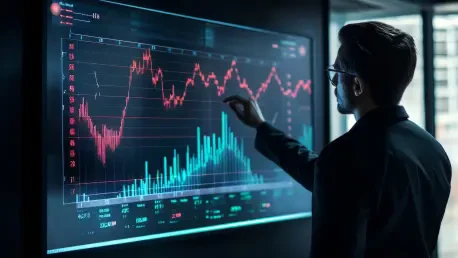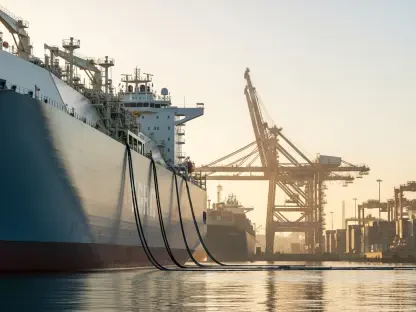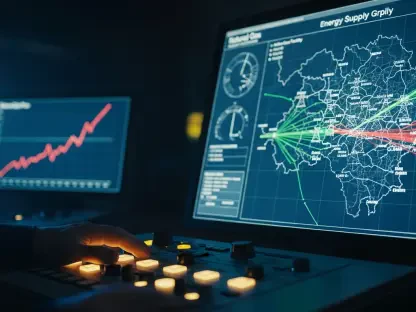In today’s interview, we’re diving into the remarkable growth of the European Energy Exchange (EEX) with Christopher Hailstone, an expert renowned for his deep insights into energy management and electricity. As the world’s largest online power trading platform, EEX has achieved a 16% revenue growth, making strides in European, North American, and Japanese markets. Christopher will shed light on the factors behind this surge, the introduction of new products, strategic global expansions, and the future of power trading.
Can you elaborate on the factors that contributed to the 16% revenue growth for EEX in 2024?
The 16% growth in revenue for EEX can largely be attributed to increased electricity trading volumes across multiple regions—Europe, North America, and Japan. Moreover, the inclusion of 80 new international trading participants expanded our market presence. This growth is a testament to both the rising demand for diverse trading options and our commitment to introducing innovative power contracts that address evolving market needs.
What specific changes in power trading volumes occurred in the European market to drive this growth?
In the European market, we witnessed a notable 29% increase in power futures trading volumes and a 10% rise in spot power volumes. These changes are primarily due to shifts in market dynamics and our ability to offer competitive and innovative trading options that attract both new and existing members. The European market’s robust response to these options played a significant role in driving our growth.
How did the participation of new international trade members impact EEX’s revenue?
The inclusion of new international trade members significantly bolstered our revenue streams. These participants brought fresh perspectives and demands to the table, which prompted an increase in trading volumes. Their involvement not only diversifies our member base but also introduces a wide range of trading strategies and needs that enrich our platform’s trading environment.
Could you discuss the new power contracts introduced in 2024 and their influence on trading volumes?
In 2024, we introduced Nordic zonal power futures and Spanish Monday-through-Sunday solar peak futures. These new contracts have been designed to cater to specific geographic and market demands, ultimately expanding our offerings and attracting more transactions. By providing contracts that reflect emerging trends and preferences in renewable energy and regional power dynamics, we’ve been able to increase our trading volumes effectively.
What are EU ETS-2 contracts, and how do you anticipate their introduction in July will affect EEX?
The EU ETS-2 contracts are a new initiative aimed at extending emissions trading to sectors previously not covered by the original EU ETS. We anticipate that their introduction will broaden the scope of trading activities at EEX, providing new opportunities for market participants to engage with carbon markets. This launch marks a significant step in our efforts to support sustainability and could potentially increase both trading volumes and member engagement.
What strategies are in place for expanding your position as the leading global power trading platform?
Our primary strategy is to continuously innovate and expand our portfolio of products and services. This involves introducing new trading contracts that meet regional and market-specific demands, enhancing our technology for smoother and more efficient transactions, and fostering strategic partnerships that extend our reach. By focusing on these areas, we aim to maintain our leadership position and cater to the evolving needs of global traders.
How did the revenue from European power derivatives increase by 58%, and what factors contributed to this rise?
The 58% increase in revenue from European power derivatives is due to a combination of factors. Firstly, our expansion strategy introduced new and relevant trading options that met the high demand for energy derivatives in the region. Secondly, our efforts to simplify and secure trading processes made it easier and more appealing for participants to engage with these derivatives, leading to increased transaction volumes.
Can you explain why there was an 18% increase in the spot power market revenue?
The 18% rise in spot power market revenue can be linked to several factors, including an overall increase in electricity demand and the attractiveness of our new trading products. The flexibility and competitive pricing of spot transactions have resonated well with market participants looking for dynamic and responsive trading options, thereby boosting our revenue.
What led to the growth in revenue from U.S. commodities and European natural gas derivatives?
Our growth in U.S. commodities and European natural gas derivatives revenue can be attributed to strategic product offerings and expanding our member network. In the U.S., the surge was driven by targeted engagement with regional traders and adjusting our offerings to better suit local market conditions. As for European natural gas derivatives, the rise can be credited to increased interest in energy diversification and our responsive adaptation of products to fulfill these market needs.
Could you provide insights into the new Nordic zonal power futures and Spanish Monday-through-Sunday solar peak futures?
The Nordic zonal power futures and Spanish solar peak futures are designed to capitalize on region-specific market dynamics and renewable energy trends. By focusing on localized needs—such as the strong commitment to solar energy in Spain and the intricate power market structure in Nordic countries—these products have attracted both local and international traders, increasing the diversity and volume of trades on our platform.
How does the shift from over-the-counter trading to cleared exchange markets affect EEX’s market share in European core power markets?
The shift to cleared exchange markets underpins an opportunity for EEX to solidify its market share due to the increased transparency and security these markets offer. This trend is likely to continue attracting participants who are seeking more reliable and structured trading environments, thus reinforcing our dominant position in European core power markets, where we already hold substantial market shares.
What challenges do you foresee for EEX in maintaining its market shares of 80-90% in these core markets?
Maintaining our current market shares will require overcoming several challenges, such as adapting to regulatory changes, managing competitive pressures from other trading platforms, and continuously innovating our technology and product offerings. Additionally, staying attuned to shifts in energy policy and consumer behavior will be critical in ensuring that we remain responsive and relevant to market demands.
What is your forecast for the future of power trading at EEX?
Looking forward, I anticipate that power trading will increasingly intertwine with digital innovations and sustainable energy solutions. Expanding our offerings to more diverse energy sectors and utilizing advanced analytics and AI for better market insights will be key. We expect to see continued growth driven by these trends, along with an ever-stronger focus on sustainability and environmental responsibility.









